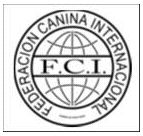Advocate General Mengozzi (the "AG") has delivered an Opinion to the Court of Justice of the European Union ("CJEU"), which, if followed by the CJEU, will confirm that registering a sign as a Community Trade Mark ("CTM") cannot be a defence to infringement of an earlier CTM.
Facts
FCI, owns the following CTM in classes 35, 41, 42 and 44 (the "FCI CTM").

Subsequently FCPPR applied to register the following as a CTM in class 16 (the "FCPPR CTM").

FCI tried to oppose the application but failed to pay the relevant fee so the mark proceeded to registration. FCI then brought an action against FCPPR for infringement of the earlier FCI CTM.
In order to decide the infringement claim, the Spanish Court
decided that it needed CJEU guidance on whether, under Article 9(1)
of Council Regulation (EC) No 207/2009 ("the CTM
Regulation"), an owner of a CTM can enforce that mark against
the proprietor of a later registered CTM before that later CTM is
declared invalid.
Opinion
The AG pointed out that this issue is a matter of live
debate in legal circles, particularly because there is a Spanish
law doctrine of "immunidad registral", by which
trade mark owners are protected from infringement proceedings for
using their registered mark. This is similar to s11(1) of the UK
Trade Marks Act 1994 which provides a defence to
infringement of a UK registered mark by the use of another
registered UK trade mark. There is no equivalent provision,
however, in the CTM Regulation.
The AG noted that he had recently given a similar opinion in a design dispute where the CJEU ultimately disagreed with the principles of immunidad registral(1). In that case it was confirmed that: (i) the right to prevent a third party from using a Community Design included against a third party owner of a later registered Community design; (ii) the fact that the later design has been registered does not confer 'immunity' from infringement proceedings; and (iii) infringement proceedings are not contingent on an action for a declaration of invalidity having previously been brought. The AG distinguished the designs and trade marks sectors, and, in particular the different application procedures. There are detailed examinations and third party oppositions for trade marks but a simplified procedure and only a formal review by OHIM for designs. This generally means that a CTM confers on the proprietor a greater degree of legal certainty. Those differences precluded the automatic application of considerations and case-law from one sector to the other
The problem of conflicting CTMs had to be resolved by the "priority principle": the owner of the earlier of two conflicting marks must be able to obtain a ban on use of the later mark as early as possible. The longer the two marks co-exist, the greater the actual or potential prejudice to the functioning of the earlier mark. Making an infringement action conditional on first obtaining a declaration of invalidity would risk disproportionate delay. Although he conceded that a mark could remain on the register and cause confusion after its use had been declared infringing, it was unlikely that the owner of a later infringing mark would persist in using the mark and the owner of the earlier mark could still apply to have it declared invalid.
The AG concluded that a different interpretation would be at odds with the unitary nature of the trade mark because the owner of the earlier CTM would have different levels of protection in different Member States, depending on whether national law allowed infringement proceedings to be instigated before the cancellation of the later national mark. Ultimately, he advised that, in proceedings for infringement of a CTM, the right to prevent the use of that mark by third parties extends to any third party using a sign that creates a likelihood of confusion, including a third party who holds a later registered CTM. He also advised that the later trade mark need not be declared invalid prior to commencing infringement proceedings.
Comment
If this Opinion is followed by the CJEU, it will clarify that a registered trade mark is no defence to an action for infringement of a CTM. It will therefore become even more important for those considering new marks to conduct full clearance searches and to identify any problematic prior marks. Simply registering the new mark as a CTM will not be a valid defence to any subsequent infringement action.
The decision relates specifically to CTMs with a view to harmonising protection given by CTMs. s11(1) of the UK Trade Marks Act 1994 is therefore unaffected by the decision, although it remains a defence that is UK specific.
On a procedural note, the case history also highlights how important it is to pay opposition fees on time. FCI would have had a far easier case if the FCPPR CTM had been knocked-out at the opposition stage.
We wait to see if the CJEU follows the AG's common-sense approach but we expect that it will do so.
The content of this article is intended to provide a general guide to the subject matter. Specialist advice should be sought about your specific circumstances.


